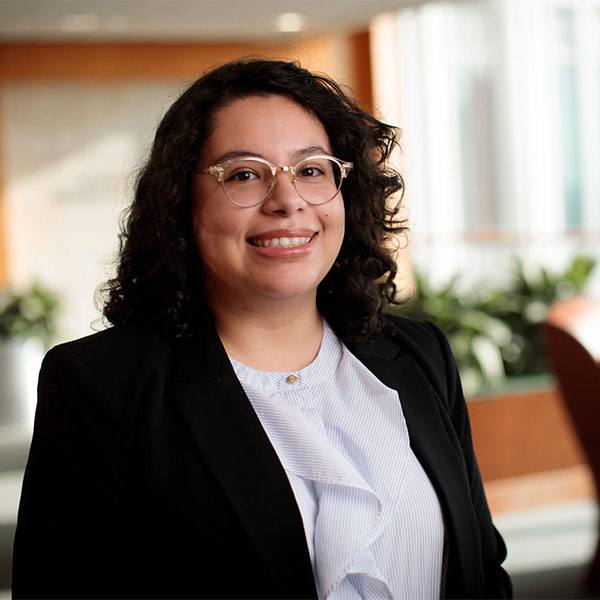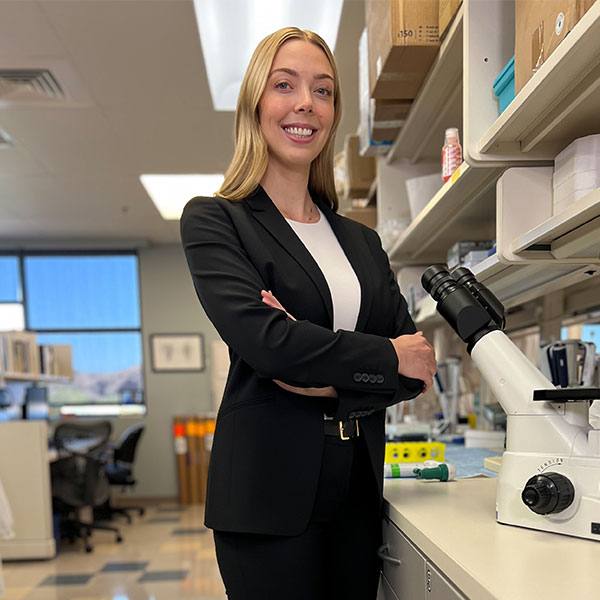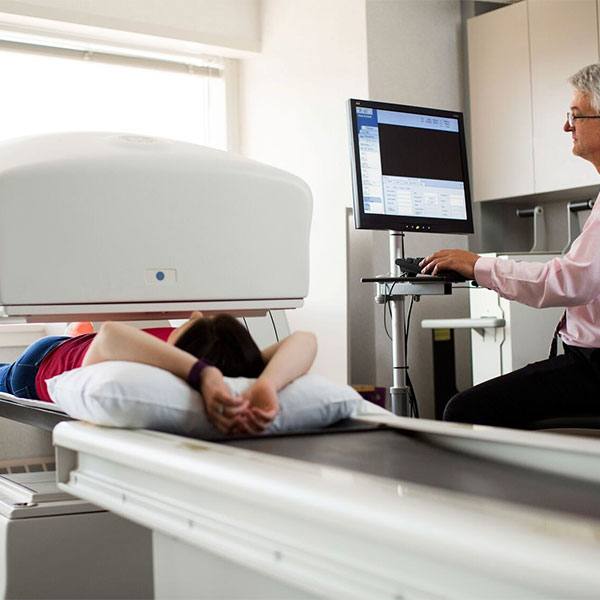-
Education
Science Saturday: Developing a digital bloodhound
Mayo Clinic student uses data analysis to power a round-the-clock stakeout for sepsis.
Andrew Harrison could have been a musician or a physicist or a biologist. But he fell for medicine and clinical informatics: using systems to organize data to improve care for patients. “I love it,” he says. And patients will too. Because although he followed an unconventional route in his training, Harrison is a prototype for medical students trained to heal both patients and the health care system.
Stopping Sepsis
As an example of what clinical informatics can do, while still a student in Mayo Clinic’s Medical Scientist Training Program, Harrison helped refine a computerized tool to detect a potentially life-threatening response to infection called sepsis. With some infections, chemical alerts flood the bloodstream. They trigger inflammatory responses throughout the body, instead of at the sight of infection. These systemic responses can damage organs and lead to severe blood pressure drops.
More people in the U.S. die from sepsis each year than from breast cancer, lung cancer and prostate cancer combined. The Centers for Disease Control and Prevention says sepsis kills a quarter million patients annually, out of 1.5 million diagnosed.
With sepsis, doctors must treat patients quickly or the syndrome can worsen, leading to long-term complications or death. To do that, they needed a tool to help identify early-stage sepsis patients in the emergency room. Harrison was part of a team of physician-scientists who developed a computer application designed to “sniff out” patients with sepsis. To play his part, he called on the variety of skills he amassed prior to his medical training.
From Math to Medicine, and Back Again
From his first physics class, Harrison aimed to put math to work. “It was not pure math but applied math in the world we live in,” he explains. “I saw a lot of possibilities in physics.”
While working on a double major in physics and genetics from Rutgers University, the New Jersey native attended Mayo Clinic’s Summer Undergraduate Research Fellowship. The program offers a laboratory experience for college students considering a doctorate in biomedical sciences. Harrison planned to get a Ph.D. in physics, but after researching virology in the first summer and immunology the second, he enrolled in Mayo Clinic’s M.D.-Ph.D. program.
Before starting the MD part of the program at Mayo Clinic School of Medicine in 2010, Harrison attended a presentation on “data sniffers” by Vitaly Herasevich, M.D., Ph.D., a Mayo clinical informatics researcher.
Dr. Herasevich was developing computer applications that sort through the electronic health record of an ICU patient and alert clinicians to early signs of dangerous syndromes.
“I knew nothing of clinical informatics,” Harrison recalls, but he was intrigued that computers could be taught to conduct surveillance and that data analysis could improve clinical decision-making. He says Dr. Herasevich’ s perspective was revelatory, tying together workflow, underlying disease, impairments, personal preferences, organizational barriers, data overload, attitudes —all of which affect patient outcomes.
Harrison was also introduced to Ognjen Gajic, M.D., a critical care specialist and clinical informaticist. Dr. Gajic also heads the Multidisciplinary Epidemiology and Translational Research in Intensive Care (METRIC) group. This band of researchers and clinicians strive to decrease complications and improve outcomes for critically ill patients through systematic research and quality improvement.
Harrison enrolled in a one-week elective course with METRIC’s Dr. Herasevich. He was hooked, becoming a regular on METRIC projects that help transform the practice of medicine, making it more effective and efficient.

The Road Less Traveled
After two years at Mayo Clinic School of Medicine, Harrison transitioned to Mayo Clinic Graduate School of Biomedical Sciences to work on his doctorate. He spent a year of rotations in basic science labs, then veered from mainstream laboratories to focus on computerized systems for clinical decision-making.
“Most students in the M.D-Ph.D. program enter a lab in basic science,” says his mentor, Dr. Herasevich. “Andrew was one of the first to go into clinical informatics. He likes to drill down into the details.”
In opting for the Clinical and Translational Science Track, Harrison learned how to conduct research to answer health questions and translate resulting discoveries into better health outcomes. But instead of searching for breakthroughs under a microscope, he discovered statistical enlightenment — the kind that becomes a best practice and improves care around the world.
Sniffing out Sepsis
Harrison’s first project was to improve a first-generation sepsis sniffer application.
Sepsis is linked to more than a dozen measurable physiological changes, including rises in body temperature, respiration, pulse and blood counts of white cells, creatinine, bilirubin and lactic acid. Harrison reviewed EHRs of past sepsis cases to determine the most telling indicators and optimized the algorithm for automated detection of sepsis.
In a clinical study, the improved sniffer accurately identified patients with sepsis and did it sooner than bedside clinicians. Because the study also revealed that multiple human factors delayed timely treatment, Harrison repeatedly refined the sepsis sniffer to command attention by reducing false-positive alerts and allowing clinicians to choose the method of alert (pager, electronic health record system or smartphone/tablet).
“He did it all,” Dr. Herasevich says. “It was like applied product development. He talked with clinicians about what they needed. He developed a solution, tested the solution, and validated the effectiveness in a real-life setting.”
In 2015, the same year Dr. Harrison completed his doctorate, his work came to fruition. The sepsis sniffer became a component of the Ambient Warning And Response Evaluation (AWARE) platform, used in Mayo Clinic critical care units to facilitate decision-making.
The Finish Line
Following a final year of clinical rotations, Harrison is scheduled to complete his M.D. in May 2018. He will be the rare new physician with expertise in clinical informatics — at least for a couple years.
-Jon Holten, September 2017







